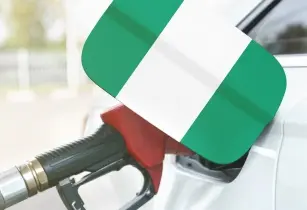The cost of Nigerian premium motor spirits rose by 0.2% month over month (m/m) in March, further narrowing the gap with market prices (unsubsidised fuel prices)
Fuel costs continue to rise due to regional shortages, price gouging, and the phased removal of subsidies, and should remain at elevated levels. The government is set to replace Nigeria's expensive fuel subsidies with direct cash payments to poor households by H2 2023. Consequently, the authorities have increased prices at the pump over the past few months to help mitigate the expected price shock.
The record increase, as projected by the National Bureau of Statistics (NBS), masks the turmoil in the domestic fuel market over the past year. Fuel prices spiked 24.7% m/m in January – the second-largest increase in the country's recent history – and costs were up 42.6% year over year (y/y) in March 2023. The government is blaming sharply rising costs on price gouging and profiteering; yet, regional restrictions, shortages, and the rollback of fuel subsidies also played a notable role. There are significant regional disparities in fuel prices in Nigeria. Borno State has seen fuel prices rise by a staggering 51.3% m/m, while in Lagos State, fuel prices dropped by 30.4% m/m. Overall, the southeast and northeast states have the highest fuel prices.
The government is set to scrap all fuel subsidies by end-June 2023 and replace these with direct cash payments to poor households by H2 2023. Fuel costs are expected to continue rising closer to market prices. However, the government is yet to provide details regarding the expected free-market price for fuel in the country. The Nigerian National Petroleum Company (NNPC) does not publish domestic market price data for unsubsidised petroleum products; only consumer price data is available. Therefore, the best estimate for domestic market prices for fuel in Nigeria is the international market benchmark. According to the Energy Information Administration (EIA), the naira-denominated market price of fuel was down 12.5% y/y compared with March 2022. This is a lower-bound estimate, as it excludes transport and administration costs. Therefore, the actual market price for fuel should be higher.
In March 2023, the consumer fuel price rose closer to the estimated market price, meaning that the government paid at least US$0.09 per litre in fuel subsidies. This gap was considerably wider last year, especially when global oil prices spiked following the start of the war in Ukraine. In Q2 2022, domestic fuel prices remained relatively stable, while international market prices rose considerably. Consequently, the government had to pay an exorbitant cost in fuel subsidies. According to the Nigeria Extractive Industries Transparency Initiative (NEITI), the Nigerian government spent nearly US$74.4bn at the official exchange rate on fuel subsidies during 2005-2022, and it is set to pay an additional US$$7.2bn in H1 2023. This has taken a massive toll on the fiscus, and spending from other budgetary items, like health care and education, has been sidelined to finance subsidies.
*Source: Oxford Economics Africa




